 This sequence actually wasn't meant to be about productivity and the challenges of the information overload. It is what Brian Solis and Deidre Breakenridge told PR professionals (in their book Putting the Public Back in Public Relations) when it comes to the changes that are taking place in the PR profession as the whole industry is being reinvented in the new world of Web 2.0 and social media.
This sequence actually wasn't meant to be about productivity and the challenges of the information overload. It is what Brian Solis and Deidre Breakenridge told PR professionals (in their book Putting the Public Back in Public Relations) when it comes to the changes that are taking place in the PR profession as the whole industry is being reinvented in the new world of Web 2.0 and social media.
However, this sequence caught my attention because it also reminded me of many of the concepts that we evangelize and teach to help today's busy professionals become more effective in today's everything overload (information overload, competing priorities overload, interruptions overload). There are lots of time management tips out there, but the above sequence is not just about tips, it is a series of mindset and behavioral changes that can bring about more significant outcomes. Let us expand on it a bit in the context of managing the overload:
1. Face it. Let us face the fact that the overload is here to stay and get worse! Sorry! No point in fantasizing that it will go away or that we can somehow bypass it.
2. Accept it. Resisting it instead of accepting it will only make us ineffective in dealing with it. It is only by accepting that we will be ready to move forward and effectively manage it.
3. Move forward. In other words, move to action. Action is it. At the minimum action gives us real data and prepares us for taking correct or better action. At best it gives us the desired results and an incredible sense of accomplishment.
4. Change. While action is momentary, change is lasting. Now we are moving from one time action to on-going practices and shifts in mindset. Now we are talking!
5. Continually learn. After all it is "all" constantly changing. Ideally it is not just about taking action and changing, it is about getting adept at this sequence so it becomes second nature.
So when we think things are overwhelming, let us think again, and follow the sequence! Let us get to action sooner than later and keep learning.


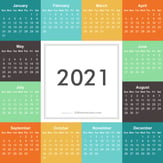
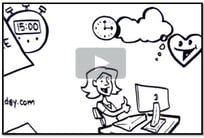



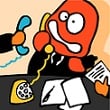 More often than not, when I ask our workshop participants why they get interrupted and why they are unable to stay focused on the task at hand, they say things like e-mail, Instant Messages (IM), phone, people stopping by, and the list goes on and on.
More often than not, when I ask our workshop participants why they get interrupted and why they are unable to stay focused on the task at hand, they say things like e-mail, Instant Messages (IM), phone, people stopping by, and the list goes on and on.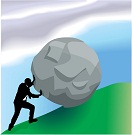 Are you struggling with a task (or a whole task list) and don't know where to start and therefore keep postponing it or avoiding it, or maybe get started and feel lost and overwhelmed? More often than not when I face a task that I perceive as over complicated or coach people who are facing such a situation, here is what we realize among other things:
Are you struggling with a task (or a whole task list) and don't know where to start and therefore keep postponing it or avoiding it, or maybe get started and feel lost and overwhelmed? More often than not when I face a task that I perceive as over complicated or coach people who are facing such a situation, here is what we realize among other things: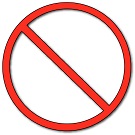 Now that we have talked about
Now that we have talked about  I am not going to leave this
I am not going to leave this How about starting 2010 differently? Starting it free of to-do lists. Yes, I said it. Free of to-do lists. Imagine what this would be like. It would be like a to-do list bailout. After all, everyone is doing it, from car companies, to banks, to real estate developers, to governments. So why not you and me?
How about starting 2010 differently? Starting it free of to-do lists. Yes, I said it. Free of to-do lists. Imagine what this would be like. It would be like a to-do list bailout. After all, everyone is doing it, from car companies, to banks, to real estate developers, to governments. So why not you and me?

 The timer is one of the tools that I recommend throughout the Accomplishing More With Less Methodology. Not any timer - a countdown timer. Setting the countdown timer for 40 minutes (or whatever time period you choose) and then pushing the Start button has significant implications.
The timer is one of the tools that I recommend throughout the Accomplishing More With Less Methodology. Not any timer - a countdown timer. Setting the countdown timer for 40 minutes (or whatever time period you choose) and then pushing the Start button has significant implications. How do most of us start our day? When we ask our workshop participants this question, the answer we invariably get is: "on e-mail". Here are some of the reasons why we start the day on e-mail (and why we keep going back to e-mail every time we hear the beep or when we are at a loss of what to do next) and I would like to hear from you what are the top 3 reasons for you (choose from the list or add your own--post your comment below):
How do most of us start our day? When we ask our workshop participants this question, the answer we invariably get is: "on e-mail". Here are some of the reasons why we start the day on e-mail (and why we keep going back to e-mail every time we hear the beep or when we are at a loss of what to do next) and I would like to hear from you what are the top 3 reasons for you (choose from the list or add your own--post your comment below):
